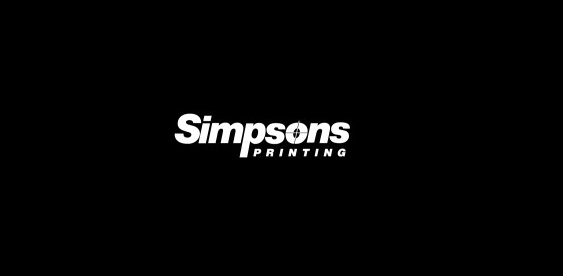How the Acuity Prime™ continues to expand the Simpsons Printing business portfolio
The journey started in the 1940s when Frank Simpson’s father saw the magnitude of printing rolling across his desk as the district superintendent of the Wesleyan Church in Rapid City, South Dakota. That would lay the groundwork for the Simpson family’s foray into the print business.
After his father helped him land a job with a local printing company, Holmgren’s Fine Printing, Frank worked his way up the ladder. When Carl Holmgren died in a tragic accident in 1962, Frank stepped in to help the family run the business, eventually securing some loans to buy the company. Along with his wife, Doris, and five sons, Frank opened Simpsons Printing. In the years that followed, after moving into other job ventures, Frank passed the business to his sons, with Dan eventually taking the reins.
Fast forward to today and Dan’s son, Jonathan, a co-owner, is the latest Simpson helping steer the family business (he joined his father in 2006). Today, the third-generation printer continues to combine the craftsmanship, accountability and quality printing the Simpsons name is known for, bolstered by state-of-the-art technology and an attentiveness to customer service with facilities in Rapid City and Gillette, Wyoming.
The Challenge
As a printer committed to staying on the cutting edge of technology in today’s ever-competitive marketplace, Simpsons Printing is always researching new and improved ways to build business. The company started digging more into large format printing, as they were selling more large format jobs that had to be outsourced to other printers.
When we saw the test samples and learned about the machine, we thought it would be a perfect fit for us. We needed the volume and extra speed, which were crucial.” – Jonathan Simpson, Co-owner, Simpsons Printing
“Because we had customers who would need things like banners, we saw the opportunities in having a large format printer,” Jonathan recalls. “We also knew that it was a huge capital investment that we knew nothing about. To move forward, we understood that taking that leap of faith meant believing in our abilities to find the right partner and learn what was needed. With our background in graphics, we had the drive and initiative—and the wherewithal—to see it through.”
The Solution
With the opportunities large format represented squarely in view, Simpsons Printing committed to taking the leap. Jonathan’s first call was to Fujifilm, a relationship his father had established over the years and he furthered. Next, the Simpsons team visited the Fujifilm Technology Center (in Kansas City at the time) with their sights initially set on the Acuity LED 1600.
While they were impressed with what the LED 1600 could do, the ACUITY PRIME caught their eye. The demo laid out everything the ACUITY could do, showcasing an enormous amount of versatility. “The Acuity is a Swiss Army knife that fits almost everything we do,” Jonathan says. “When we saw the test samples and learned about the machine, we thought it would be a perfect fit for us. We needed the volume and extra speed, which were crucial. The dependability of the print heads and ink set was also important, ensuring the adhesion we desired and addressing concerns about substrate sensitivity. It has been a great addition to our fleet of machines.”
The Results
The verdict is pretty straightforward: The more the ACUITY shows what it can do, the more the Simpsons team takes on new projects, especially ones they should, as Jonathan admits, say no to. “It offers faster speed and better substrate handling, aligning with our direction toward a true flatbed platform. It was a significant step forward for us at the right time.”
From the new heads to the anti-static system and the new vacuum, everything is more powerful. Jonathan says it is noticeably more powerful than other Acuities with hold down, which is crucial for challenging substrates. “Ultimately, it’s the reliability and speed we’re after, especially given the volume of production we handle. We’ve always struggled with head dropouts on every platform we’ve used, but this machine has been very dependable.”
For example, the new pin reading for registration height is a welcome addition, as it removes some variables and ensures consistent head heights. “This is particularly important when working with expensive materials like acrylic,” Jonathan says. “It allows us to hit a very broad spectrum of jobs and has never let us down. It’s going to be a driving force for us for the next few years and help us grow this side of our business.”

